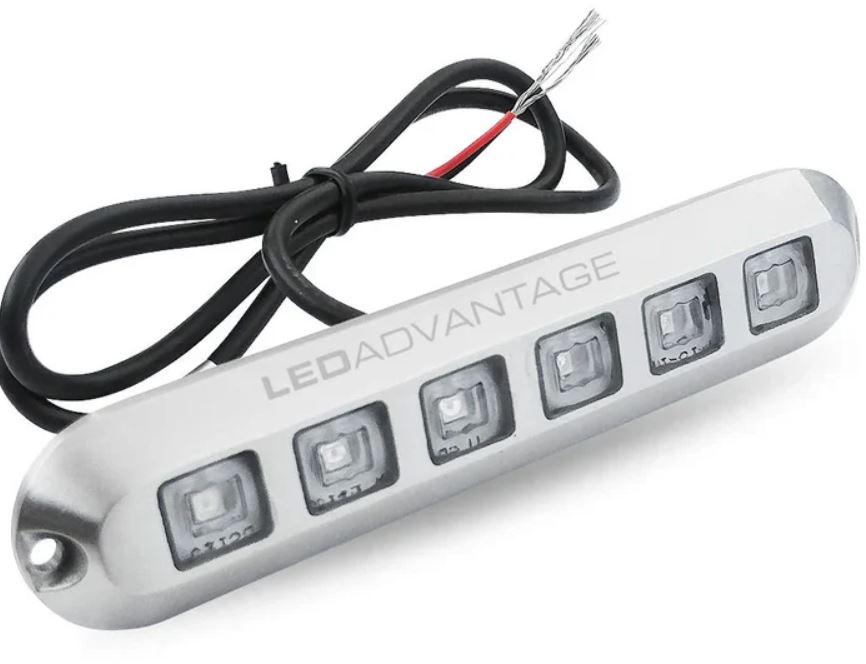Boating is not just a hobby for many; it's a way of life. Whether you are an avid fisherman, a weekend sailor, or a party enthusiast cruising on your yacht, the experience is all about enjoying the water while ensuring safety and functionality. One of the essential aspects of this experience is proper lighting, which has seen significant advancements over the years. Among the various lighting options available, LED lights have become increasingly popular for boats. This article delves into the world of boat LED lights, exploring their benefits, types, installation tips, and maintenance.
Benefits of Boat LED Lights
Energy Efficiency: One of the most significant advantages of LED lights is their energy efficiency. This is particularly important for boats, where energy conservation is crucial to prevent draining the battery.
Longevity: LED lights have an impressively long lifespan, often lasting up to 50,000 hours. This longevity means fewer replacements and lower maintenance costs, making them a cost-effective solution for boat owners.
Durability: Designed to withstand harsh marine environments, LED lights are resistant to shock, vibration, and extreme temperatures. This durability makes them ideal for boats that face rough waters and constant movement.
Brightness and Clarity: LED lights provide bright, clear illumination, improving visibility both on and off the boat. This enhanced brightness is particularly beneficial for nighttime navigation and ensuring the safety of everyone on board.
Aesthetic Appeal: With a variety of colors and styles available, LED lights can significantly enhance the aesthetic appeal of a boat. Whether it's underwater lights, deck lights, or cabin lights, LEDs can create a visually stunning effect that enhances the boating experience.
Types of Boat LED Lights
Navigation Lights: These are essential for safe boating, especially at night. LED navigation lights include port and starboard lights, stern lights, and masthead lights. They ensure that other vessels can see your boat, helping to avoid collisions.
Deck and Courtesy Lights: These lights are used to illuminate the deck, making it safer to move around the boat in low-light conditions. Courtesy lights are typically installed in areas where people frequently walk, such as stairs and passageways.
Underwater Lights: Installed below the waterline, underwater LED lights are popular for their stunning visual effects. They not only enhance the look of the boat but also attract marine life, making them a favorite among fishing enthusiasts.
Cabin Lights: LED cabin lights provide interior illumination, creating a comfortable and inviting atmosphere inside the boat. They are available in various styles, including recessed lights, strip lights, and reading lights.
Accent and Decorative Lights: These lights are used to add a touch of elegance and style to the boat. From rope lights outlining the boat’s contours to spotlights highlighting specific areas, accent lights can transform the look of any vessel.
Floodlights and Spotlights: These powerful lights are used for illuminating large areas. Floodlights are ideal for lighting up the deck, while spotlights can be used for docking or searching for objects in the water.
Installation Tips for Boat LED Lights
Planning: Before starting the installation, plan the layout carefully. Determine where each light will be installed and ensure that the wiring will be concealed and protected from water and physical damage.
Choosing the Right Lights: Select LED lights that are specifically designed for marine use. Marine-grade LEDs are built to withstand the harsh conditions of the sea, including saltwater corrosion and UV exposure.
Proper Wiring: Use marine-grade wiring and connectors to prevent corrosion and ensure a reliable connection. It's essential to follow the manufacturer’s guidelines for wiring and installation to avoid electrical issues.
Sealing and Waterproofing: Ensure that all connections are properly sealed and waterproofed. Use heat shrink tubing and marine sealant to protect the wiring and connections from moisture.
Fuse Protection: Install fuses or circuit breakers for each lighting circuit to protect against short circuits and overloads. This step is crucial for preventing electrical fires and ensuring the safety of your boat.
Testing: After installation, thoroughly test the lights to ensure they are working correctly. Check for proper illumination, secure connections, and any potential issues that need addressing.
Maintenance of Boat LED Lights
Regular Cleaning: Keep the LED lights clean to maintain their brightness and efficiency. Use a soft cloth and mild soap to remove dirt and salt deposits, and avoid using harsh chemicals that could damage the lights.
Inspection: Regularly inspect the lights and wiring for signs of wear and tear, corrosion, or damage. Address any issues promptly to prevent more significant problems and ensure the longevity of the lights.
Moisture Protection: Even though marine-grade LEDs are designed to be water-resistant, it’s essential to keep them as dry as possible. Ensure that all seals and gaskets are intact and replace them if necessary.
Battery Management: Proper battery maintenance is crucial for ensuring that your LED lights function correctly. Regularly check the battery’s charge and condition, and ensure that it is adequately charged before setting out on the water.
Conclusion
Boat LED lights are a vital component for enhancing safety, functionality, and aesthetic appeal on any vessel. Their energy efficiency, durability, and brightness make them a superior choice over traditional lighting options. By understanding the different types of LED lights available and following best practices for installation and maintenance, boat owners can enjoy the numerous benefits these lights offer. Whether you’re navigating through the night, fishing in the deep sea, or hosting a party on your yacht, LED lights can significantly enhance your boating experience, making it safer and more enjoyable.





Comments